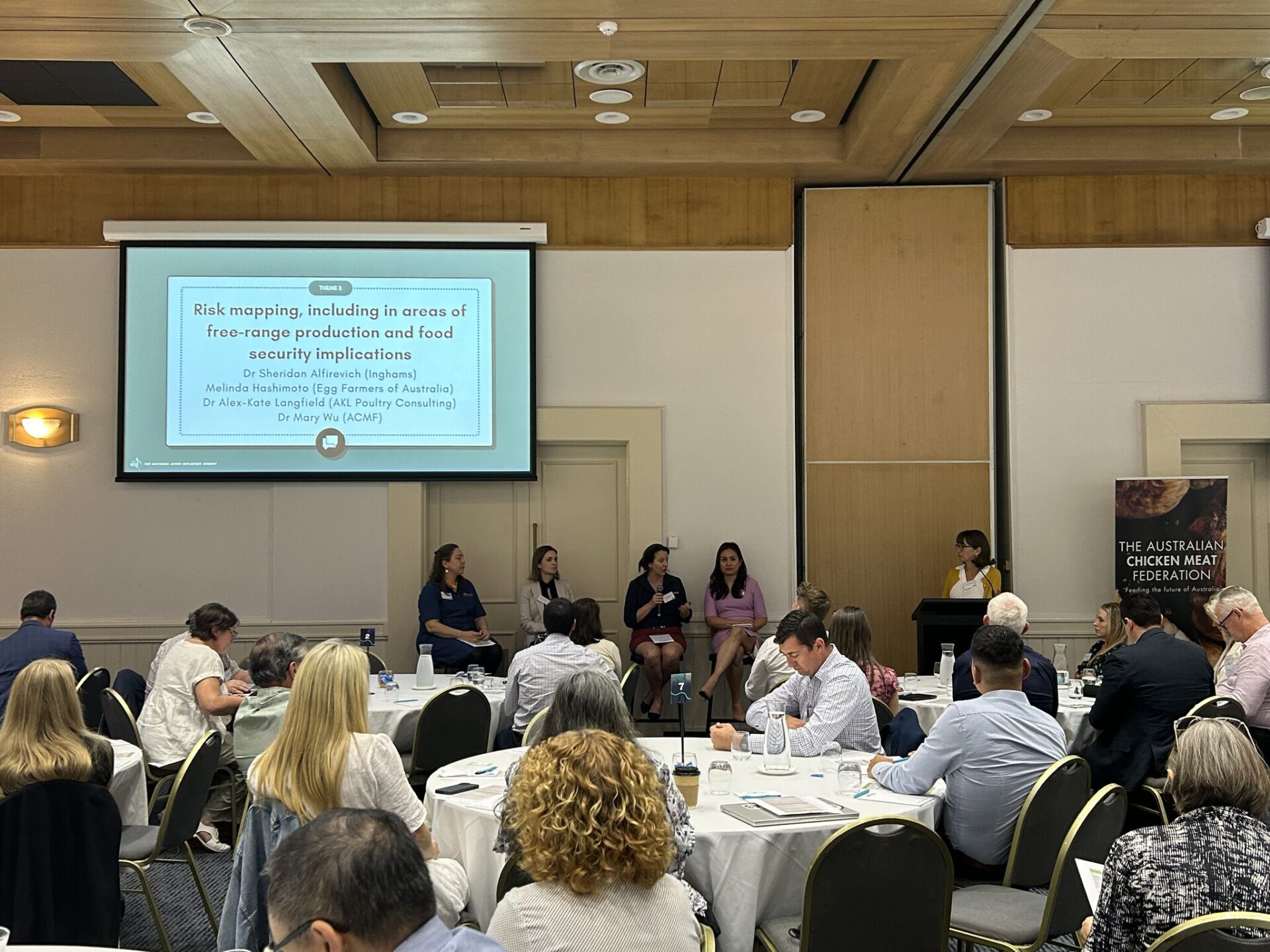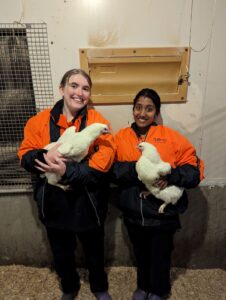In late August, I had the privilege of attending the National Avian Influenza Summit, an event organised by the Australian Chicken Meat Foundation (ACMF). This significant gathering brought together industry leaders, biosecurity experts, and government officials to address the pressing issue of avian influenza in Australia. The summit, held both in person and online, enabled a broad spectrum of participants to engage in meaningful dialogue and share their expertise.
The summit commenced with a series of presentations that painted a vivid picture of the current state of avian influenza in Australia. Dr. Mary Wu of ACMF, Mr. Rowan McMonnies from Australian Eggs, and Dr. Beth Cookson, Australia’s Chief Veterinary Officer, each delivered updates that underscored the seriousness of recent outbreaks in Victoria and New South Wales. Their presentations highlighted the ongoing risks and the importance of vigilant monitoring and preparedness. The speakers’ insights set the tone for the summit, emphasising the need for a coordinated and proactive approach to managing avian influenza.
Following these opening remarks, the summit transitioned into its first thematic focus: “Likely Pathways for Incursions and Surveillance.” This session featured an in-depth analysis of the wild bird surveillance system for H5N1, led by Paul Eden from Wildlife Health Australia. Paul’s presentation provided critical insights into how wild bird populations could serve as vectors for the virus, making surveillance a cornerstone of Australia’s biosecurity efforts. Complementing this was a powerful presentation on the lived experiences of avian influenza outbreaks in the United States by Oscar Garrison from UEP and Dr. Seiche Genger from Baiada. Their accounts were both sobering and instructive, offering valuable lessons for the Australian context.
The session concluded with a facilitated discussion, where Dr. Sam Allan of Animal Health Australia, Dr. Tiggy Grillo AM from Wildlife Health Australia, Dr. Andrew Walsh of Inghams, and Dr. Beth Cookson deliberated on whether current surveillance settings in Australia are truly fit for purpose. The conversation was robust, identifying several key challenges that need to be addressed, particularly in enhancing the efficacy of surveillance systems and ensuring they are adaptable to evolving threats. The dialogue underscored the importance of continual reassessment and refinement of biosecurity measures.
The summit then moved into its second thematic session, “Preparing for ‘The Big One’,” which delved into the critical areas of risk mapping and food security, particularly in regions of free-range production. This discussion was facilitated by Dr. Alex-Kate Langfield from Hatch House, Melinda Hashimoto of Egg Farmers of Australia, Dr. Sheridan Alfirevich from Inghams, and Dr. Mary Wu. The session provided a comprehensive overview of the risks associated with avian influenza, particularly in free-range farming, where the potential for disease spread is heightened.
One of the most valuable aspects of the summit was the opportunity for participants to engage in practical, solutions-oriented discussions. A session on communication protocols, biosecurity enhancements, and educational initiatives was facilitated by Amanda Olthof from AgriFutures Australia, Dr. Andrew Walsh, and Dr. Peter Scott of Scolexia.
The day continued with a discussion on national contingency planning, led by Byron Stein of NSW DPI, Dr. Brant Smith from DAFF, and Dr. Mary Wu. This session was critical in addressing the strategic aspects of biosecurity, including response coordination and funding mechanisms. Participants explored various scenarios and potential responses, emphasising the need for a well-coordinated national plan that can be activated swiftly in the event of an outbreak.
The first day concluded with a deep dive into response and funding strategies, focusing on compensation, flock and business recovery, and long-term considerations. This session featured insights from Dr. Therese Wright of Animal Health Australia, Dr. Graeme Cooke, the Chief Veterinary Officer for Victoria, Dr. Jo Coombe, the Chief Veterinary Officer for New South Wales, and Dr. Mary Wu. Their discussion highlighted the complexities of managing an outbreak from an economic perspective, particularly in ensuring that affected businesses receive adequate support to recover and resume operations.
The second day of the summit continued with a focus on practical biosecurity measures, starting with the theme “On-Farm Biosecurity and Response Preparedness.” This session emphasised the importance of implementing stringent biosecurity protocols at the farm level, which are crucial in preventing the spread of avian influenza. The discussions were led by Dr. Mark Cozens from Animal Health Australia, who provided valuable insights into best practices for farm-level biosecurity and the importance of preparedness in mitigating the impact of an outbreak.
The summit then transitioned into a discussion on movement scenarios using the AUSVET plan, again facilitated by Dr. Mark Cozens. This session explored the logistical challenges associated with controlling the movement of animals and products during an outbreak, highlighting the importance of having a clear and effective plan in place. The discussion was rich with practical advice, offering participants strategies to manage these scenarios effectively.
Following this, the focus shifted to the national contingency plan, with a discussion on industry positions for disease response planning. This session provided an opportunity for industry representatives to voice their concerns and offer input on the development of a cohesive, industry-wide response strategy. The dialogue was particularly productive, as it allowed for the exchange of ideas and the development of a unified approach to disease response planning.
The final session of the summit focused on industry communications, with an emphasis on facilitating faster information dissemination during an outbreak. This theme was particularly relevant in light of the recent avian influenza outbreaks in Australia, where timely and accurate communication is critical in managing the spread of the disease. The session provided valuable insights into how the industry can improve its communication strategies, ensuring that all stakeholders are kept informed and that responses are coordinated effectively.
Throughout the two-day summit, it became evident that while Australia has made significant strides in its efforts to combat avian influenza, there are still many challenges that need to be addressed. The summit provided a valuable platform for identifying these challenges and working collaboratively to develop solutions. The small group workshops were particularly effective in fostering dialogue and generating innovative ideas that can be implemented moving forward.
The National Avian Influenza Summit was a resounding success, bringing together key stakeholders from across the industry to discuss the pressing issue of avian influenza. The event highlighted the importance of collaboration, communication, and preparedness in managing this significant biosecurity threat. The insights and recommendations generated during the summit will undoubtedly play a crucial role in shaping Australia’s future response to avian influenza, ensuring that the industry is well-prepared to face any challenges that may arise.
Professor Tamsyn Crowley






